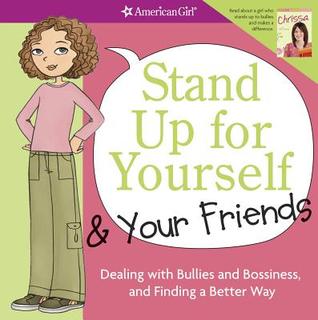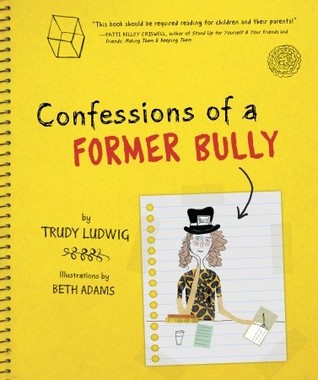Bullying: How To Safely Help Someone
This video encourages young people to support those being bullied or tell a trusted adult. [AMZ-110]
Youth
Dealing with bullies is really no fun, and it can be hard to know what to do when someone bullies a friend. You don’t have to be a superhero to support a friend who is being bullied. Just being an upstander can go a long way. An upstander is someone who stands up for others when they see bullying happening.
There are four different ways to be a good upstander: being a buddy, interrupting the bully, speaking out and telling someone. Bullies often target people they believe are on their own and don’t have friends. Being a friend to the person being bullied lets the bully know that the victim is not alone and has support. Sometimes people will bully others just to get attention, so if that happens you can interrupt them by helping turn everyone’s attention to something more positive. If you think it’s safe, you could speak directly to the bully and get them to stop. If you’re worried the bully will retaliate against you, find the nearest adult who can step in and tell them what’s going on instead.
Upstanders are super important in helping to quickly end ongoing, aggressive, abusive and harmful behavior. You can be an upstander anywhere—whether it’s in person or online. And again, if you need help, don’t be afraid to ask an adult you trust.
It’s often recommended that you ignore bullying messages instead of responding to them, but we know that’s tough! You can also unfriend bullies or block their messages or texts, so you don’t see them. Ignoring cyberbullying isn’t your only option, and you definitely don’t have to face it alone. It’s a good idea to get help from a parent, school counselor or another trusted adult. Save the messages, especially if the cyberbullying contains threats, so they can be reported to the proper authorities.
People bully others for many reasons. Often they to it because they are insecure, and they put others down to try and feel better about themselves. Sometimes though, a person may bully others when someone is bullying them and they feel like they don’t have any power.
Being mean to a bully may make you feel good in the short term; however, it doesn’t guarantee that the bullying will stop. In fact, being mean to a bully may only make them feel like they have more of a reason to be mean. If you’re worried about how to address a bully, talk to an adult you trust about how to deal with the situation.
Parents
Bullying is a common problem faced during the childhood years. Many young people struggle with knowing what to do if they’ve been bullied or if it’s happening to a friend. Parents can teach their children to stand up to bullies by practicing bystander intervention or being an “upstander,” when they recognize a potentially harmful situation and actively respond to the situation with the intent to stop the harmful behavior and create a positive outcome.
In order to respond appropriately, it is important to know the signs, and understand the difference between conflict and bullying. Conflict is common among young people, but it should not be confused with bullying that occurs when there is a power imbalance between individuals or a group of individuals. In situations of bullying, the negative behavior is purposeful, often repetitive, and involves a threat of emotional or physical harm. Bullying has negative social, emotional, developmental, academic, and sometimes physical effects, and can lead to more serious issues such as anxiety, depression, and self-harm.
Some research estimates that 57 percent of bullying situations stop when a peer intervenes on behalf of a person who is being bullied. Bullying can happen both in person and online, and so can being an upstander. Parents can encourage children to stand up to bullying in four different ways: being a buddy, interrupting the bully, speaking out, and/or telling someone. Supportive parents and other trusted adults can go a long way in helping young people feel empowered to address bullying when it happens.
CONVERSATION STARTERS
When parents and caregivers engage in loving and supportive conversations with children about sexuality and related topics, it allows children to practice safe and healthy habits as they grow up. Talking with young people about how to address bullying can be a useful way to let your child know that you are available for them if they ever run into trouble.
Below are some ways to start conversations about bullying:
If you hear about someone who is being bullied or is bullying other kids, broach the topic with your child while in the car. “I heard Alice was sending messages that weren’t very nice to another kid at school. Did you hear about this?” This is just one way to begin the conversation. You can talk about how hurtful bullying is and how some people bully others to make themselves feel powerful. By asking what your child thinks about this, you can find out if they have experienced bullying and how they would handle it. This is also a good time to reassure your child that they can come to you if they are bullied.
Sometimes it can be difficult for young people to see bullying as a particular wrong if they don’t see adults standing up against it, or if they see adults bullying each other. Being clear with young people that it is wrong to bully others, and practicing kind, supportive behaviors goes a long way to help them understand the importance of being an upstander.
Educators
Bullying is a common problem faced during the childhood years. Many young people struggle with knowing what to do if they’ve been bullied or if it’s happening to a friend. Educators can teach students in their classrooms to stand up to bullies by practicing bystander intervention or being an “upstander,” when they recognize a potentially harmful situation and actively respond to the situation with the intent to stop the harmful behavior and create a positive outcome.
It can be easy for some teachers to assume that students may be experiencing common drama between peers; however, it is important to know the signs, and understand the difference between conflict and bullying. Conflict occurs when two people do not agree and are upset about a particular circumstance or situation. Conflict occurs on occasion and is not repetitive. In a healthy conflict scenario, both parties have equal power and want to problem-solve. Bullying occurs when there is a power imbalance between individuals or a group of individuals. In situations of bullying, the negative behavior is purposeful, often repetitive, and involves a threat of emotional or physical harm. Bullying has negative social, emotional, developmental, academic, and sometimes physical effects on all parties involved and can lead to more serious issues such as anxiety, depression, and self-harm.
Some research estimates that 57 percent of bullying situations stop when a peer intervenes on behalf of a person who is being bullied. There are four ways a young person can be an upstander: being a buddy, interrupting the bully, speaking out and/or telling someone. While in most cases it can be helpful to let young people use these tools to tackle bullying on their own, there may be times when they’ll need help from you as someone with more authority. If you’re not already familiar with your school’s policies and protocols related to bullying, it may be a good idea to find out what they are. If there aren’t already policies and protocols in place, work with your school to ensure there are clear policies and protocols that are enforced.
Discussion Groups
- According to the video, what’s the biggest difference between someone who is a bystander to bullying and someone who acts as an upstander?
- What are three different strategies an upstander could use to address bullying when they see it?
- Do you believe the strategies listed in this video could be effective at addressing bullying? Why or why not?
- Why do you think people choose to bully others?
- What difference do you believe it would make if more people became upstanders instead of bystanders when bullying happens?
National Sex Education Standards
Identify situations that may be uncomfortable or dangerous (e.g., bullying, teasing, child sexual abuse)
Identify trusted adults, including parents and caregivers, that you can talk to about situations which may be uncomfortable or dangerous (e.g., bullying, teasing, child sexual abuse)

